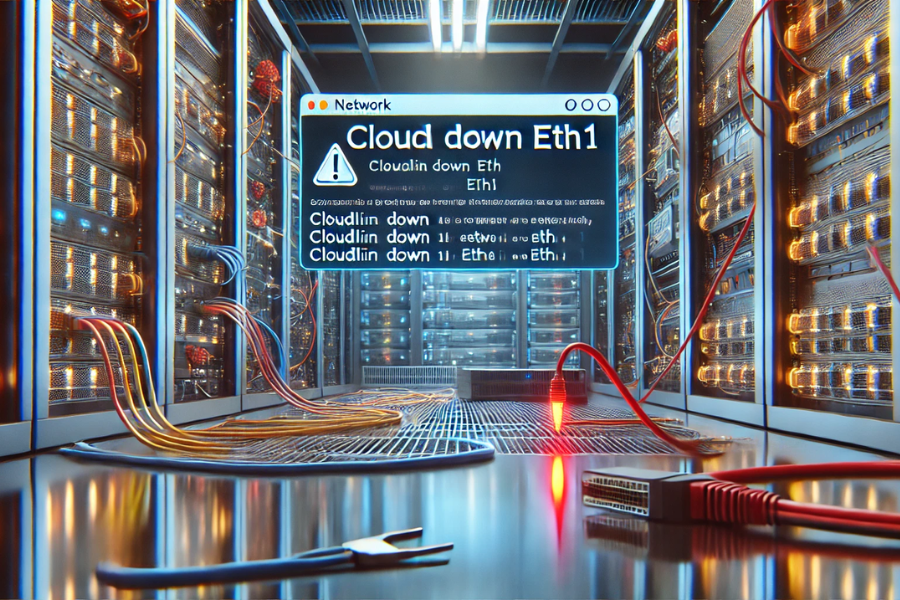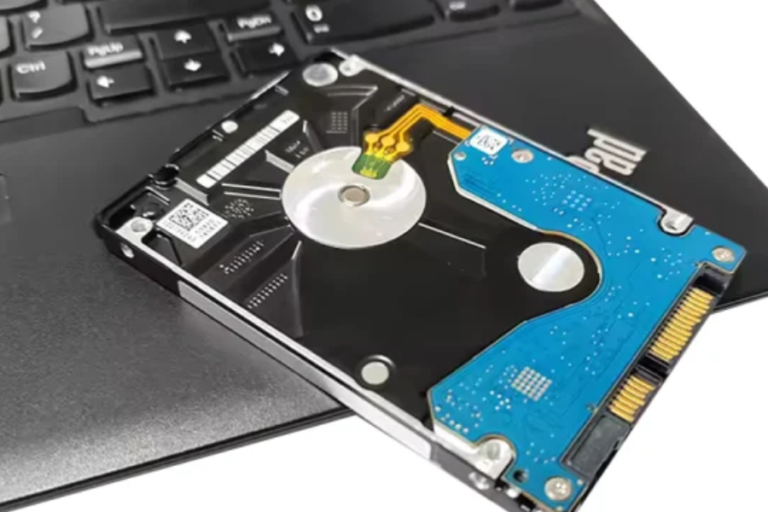Resolving “Cloudlin Down ETH1”: Comprehensive Guide to Network Interface Troubleshooting
Network issues are a common challenge in both cloud and on-premises environments, and one problem network administrators often encounter is the “Cloudlin Down ETH1” message. This indicates a disruption in the Ethernet interface labeled as ETH1 on systems running Cloudlin or similar network management tools. While it might sound technical, understanding and resolving this issue is vital for maintaining seamless network operations and preventing costly downtime.
In this guide, we’ll cover everything from the meaning of “Cloudlin Down ETH1” to potential causes, troubleshooting steps, and best practices for avoiding network interface issues in the future.
Knowing About “Cloudlin Down ETH1” and Its Effects

The Ethernet port or interface designated as ETH1 is not operational when you observe “Cloudlin Down ETH1.” ETH1 is crucial in multi-interface configurations as it is often used for secondary or extra network connections. Particularly in systems that rely on numerous interfaces for load balancing or redundancy, an inactive or failing ETH1 might result in connection loss, decreased Network performance, and even outages.
Symptoms of an ETH1 Failure
When the ETH1 interface goes down, the following symptoms may appear:
- Connection loss on devices relying on ETH1
- Interrupted data transfer with packet loss or incomplete transmissions
- Alerts and error messages indicating network interface failure
- Network slowness and increased latency due to disrupted connections
- IP conflicts or mismatched IP addresses on affected ports
These issues can occur in cloud infrastructures, data centers, and local networks, impacting both individual users and enterprise environments.
Why Does “Cloudlin Down ETH1” Happen? Key Causes
To fix the “Cloudlin Down ETH1” error, it’s essential to understand the underlying causes. Here are some of the most common reasons for ETH1 interface failures:
1. Physical Connectivity Problems
A loose or damaged Ethernet cable is often the simplest explanation for interface issues. If the cable connected to ETH1 is dislodged, unplugged, or damaged, it can result in the interface going down.
Solution:
- Secure the connection by ensuring that the Ethernet cable is fully inserted into both the network switch or router and the ETH1 port.
- Inspect for physical damage and replace cables that show signs of wear, cuts, or other deterioration.
2. Configuration Errors in Network Settings
Incorrect configuration of network parameters such as IP addresses, subnet masks, or gateways can cause an Ethernet interface to fail. Misconfigurations can lead to communication issues and may even bring down the entire interface.
Solution:
- Verify network settings for ETH1, ensuring that all parameters are correct.
- Confirm IP address assignment—either configure a static IP address or verify that the DHCP settings are functioning as expected.
3. Outdated Drivers or Firmware
Drivers or firmware that are outdated or incompatible with your hardware can cause network failures, leading to errors like “Cloudlin Down ETH1.”
Solution:
- Update drivers for your Ethernet adapter through your operating system or directly from the hardware manufacturer’s website.
- Check firmware requirements from your device manufacturer to ensure compatibility with the network interface.
4. Router or Switch Misconfiguration
Sometimes the problem lies within the router or network switch rather than the Ethernet interface itself. A misconfigured switch port can prevent the interface from establishing a stable connection.
Solution:
- Examine the configuration of the network switch and router ports connected to ETH1.
- Switch ports: Test by connecting to another port if available to see if the issue is port-specific.
- Restart equipment if necessary to resolve temporary connectivity issues.
5. Issues with VLANs or Bonding Configurations
Complex networking setups often involve VLANs (Virtual Local Area Networks) or interface bonding (link aggregation) to increase efficiency. Improper configuration in these setups can cause ETH1 to go offline.
Solution:
- Review VLAN and bonding configurations on both the switch and server, ensuring consistency.
- Validate bonding mode settings if ETH1 is part of a bonded interface.
Step-by-Step Troubleshooting for “Cloudlin Down ETH1”
Once you’ve identified potential causes, follow these troubleshooting steps to resolve the issue effectively.
- Physical Inspection
Start by checking physical connections and cables. Ensure the cable is firmly connected, and inspect for any visible damage. - Network Configuration Check
Review the network configuration for ETH1 to ensure correct IP addresses, subnet masks, and gateway settings. Make sure the DHCP or static IP configuration matches network requirements. - Driver and Firmware Update
Access the system’s network drivers and confirm they are up to date. For optimal performance, always use the latest firmware version recommended by the hardware manufacturer. - Verify Switch and Router Settings
Check the switch or router configuration associated with ETH1, including VLAN and trunk settings if applicable. If a restart is feasible, rebooting the switch or router can help re-establish the connection. - Test Alternative Ports or Cables
Swap the Ethernet cable to another port on the switch or try a new cable to rule out port or cable-specific issues.
Best Practices for Preventing Ethernet Interface Failures
To avoid future incidents like “Cloudlin Down ETH1,” implementing preventive measures can be invaluable. Here are some effective practices for maintaining reliable Ethernet interfaces.
1. Conduct Regular Network Maintenance
Periodic inspections and maintenance reduce the risk of unexpected network issues. Monitoring tools can be particularly useful for early detection of potential problems.
- Inspect physical connections routinely for wear and secure connections.
- Monitor performance metrics like traffic patterns and latency to catch issues early.
2. Schedule Regular Updates for Drivers and Firmware
Outdated drivers and firmware often lead to compatibility problems, so setting up a regular update schedule is essential.
- Schedule routine updates for network drivers, firmware, and software.
- Monitor vendor updates for critical patches or updates to improve stability.
3. Establish Redundant Network Interfaces
Redundancy in network setups is crucial for environments where downtime isn’t an option. Configure bonding or failover systems to protect against individual interface failures.
- Use bonding to create redundancy so that if ETH1 fails, traffic reroutes to another interface.
- Test failover mechanisms periodically to ensure reliability in case of failure.
4. Optimize VLAN Configuration
VLANs can help with network organization and bandwidth management but require careful setup to prevent conflicts or interface issues.
- Set up VLANs with consistent tagging across the network.
- Segment critical traffic using VLANs to avoid congestion and maximize performance.
5. Implement Proactive Monitoring
Proactive monitoring software can alert you to potential issues before they lead to interface downtime, allowing for faster response times.
- Set up automated alerts to notify you of interface or connectivity issues.
- Analyze historical network data to identify trends that might signal future issues.
Final Thoughts
The “Cloudlin Down ETH1” error signals an Ethernet interface issue that can disrupt network stability. By recognizing the various causes, from physical cable issues to configuration and firmware problems, network administrators can effectively troubleshoot and resolve the issue.
Preventive strategies such as regular updates, monitoring, and redundancy will help minimize the risk of future occurrences. By proactively managing your network, you can avoid downtime, improve connectivity, and ensure that your systems are always ready to support critical operations.
Keep an eye for more news & updates on Internal Breaking!






